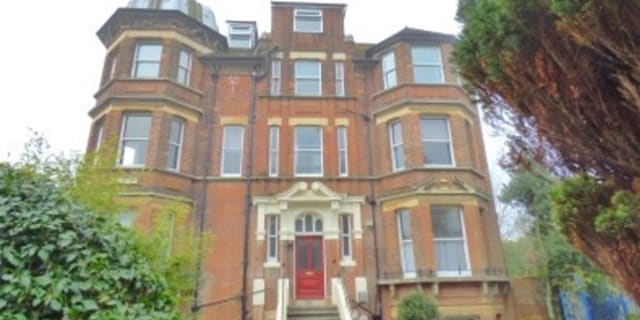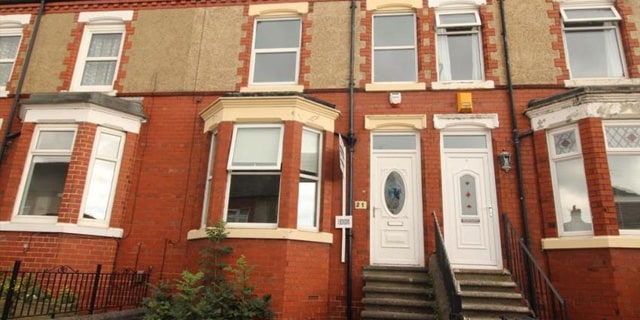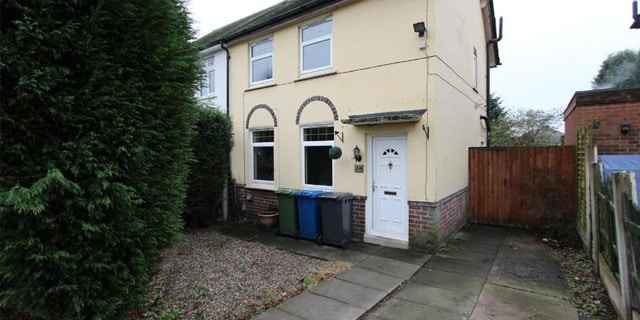How can we help stop house repossession?
At House Buy Fast we specialise in buying houses fast for cash.
This means that by selling your house to us you could have a cash lump sum within days to pay off the mortgage or loan and stop the house repossession order.
We can also work to your chosen timescale to allow you to find alternative accommodation.
We have many years of experience in helping people stop house repossessions and our experienced staff will be able to talk you through the process.
What happens when you miss your first payment?
If you missed your payment date for the first time you do not need to worry too much. Contact the lender straight away, even if you’re planning to pay the mortgage the next day. Be clear about your financial situation. You will have a date agreed by which you will need to pay your mortgage arrears.
What happens when you miss two payments?
If you didn’t manage to get the funds to make the agreed payment do not delay contacting your lender. Good communication is crucial. Work with them, and discuss all the possible options. You most likely still can arrange a repayment plan that will be suitable for both parties. As you’ve already 2 months in arrears the sum owed is getting bigger. If you know that your problems are temporary, the lender will most likely work with you to resolve the problem without taking legal action.
What happens when you miss three payments?
If you miss three or more payments, the lender will start court proceedings against you. As scary as it may sound, it does not mean that you will definitely lose the house. It is worth getting professional legal advice at this point. If the lender submits an application for a repossession order to a local court you will receive a letter with all the details and the date of the hearing. The court will also send you a defence form with instructions on how to fill it in. Court hearings may have many outcomes, so it’d not black and white situation. You can find a detailed explanation here
Quick sale to prevent repossession and avoid court action
Robin showed considerable empathy and understanding during this difficult time for us in making the process as fair and simplistic as these things can be.
What is house repossession?
House repossession happens when a mortgage lender or a secured loan provider takes ownership of the property.
This happens if you regularly fail to make mortgage or loan payments and you fall into arrears. They then sell on the house to cover the cost of the outstanding loan.
It is a legal process which lenders use only as a last resort and must be agreed by a court of law before house repossession can take place.
You may also be at risk of having your house repossessed if a bankruptcy order is made against you, a compulsory purchase order is made against your property or you don’t pay ground rent or service charges to your freeholder or break the conditions of your lease.
If your house is being repossessed you will be evicted from the property and the lender will take ownership of your property. They will then sell the property to pay off the debts you owe.
Often the house is sold for less than its market value so the proceeds may not cover all the debts you owe. You will be responsible for covering this shortfall.
You may also be responsible for paying the mortgage and other bills until the property is sold, even though you no longer own it.
You can read more about house repossession on Shelter’s website.

If you think your property could be repossessed we know this can be a very worrying and stressful time. Our staff are all experienced in helping people who are facing repossession and can help you through the process if you decide to sell your home to us.
How does stopping house repossession work?
Firstly we will give you a cash offer for your property. If you accept this offer we can quickly move forward with purchasing your home.
Our experienced staff know the property buying process inside out and work with solicitors who can act quickly on your behalf. There will be a few forms for you to fill in but there will be no fees and the sale is guaranteed.
We will also keep your bank or lender informed every step of the way.
What are the consequences of house repossession?
Firstly we will give you a cash offer for your property. If you accept this offer we can quickly move forward with purchasing your home.
Our experienced staff know the property buying process inside out and work with solicitors who can act quickly on your behalf. There will be a few forms for you to fill in but there will be no fees and the sale is guaranteed.
We will also keep your bank or lender informed every step of the way.
Why choose us to help stop your house repossession?
We offer an alternative to the traditional estate agency methods and a solution to mortgage and repossession difficulties.
For some of our clients their local estate agent has been unable to find a buyer, or if they do, the process takes too long and there is pressure from a bank, mortgage lender or other lender for a repossession order on the property.
We will offer you a cash lump sum for your property and talk to your bank or mortgage lender to let them know you have a guaranteed buyer. As we are using our own cash funds we are able to proceed quickly with the sale – allowing you to pay off the mortgage or loan and get rid of the stress and worry of a house repossession.
It doesn’t even matter what condition your property is in, we can buy any house in the UK.
If you’re already in the process of a repossession, we can still help, and you’ll usually be better off stopping a repossession rather than allowing a voluntary repossession.
Benefits of using House Buy Fast compared to traditional estate agents
| Our quick sale service | Traditional estate agents | |
|---|---|---|
|
Sale period
3-28 days |
Sale period
6-9 months |
|
|
Guaranteed sale
Yes |
Guaranteed sale
No. On average, 1 in 3 sales fall through (national statistics) |
|
|
Repairs needed for house to sell
None |
Repairs needed for house to sell
Possible (Agents usually ask for repairs) |
|
|
Privacy
No Viewings |
Privacy
For sale sign outside and continuous viewings |
Can I stop a house repossession without selling my home?
It may be possible to stop the repossession of your home without selling it. In this case, it would be best to seek out the free advice of the following organisations:
- GOV.UK Website – Free independent repossession advice from the UK Government.
- Citizens Advice – Online free advice from Citizens Advice.
- National Debtline – A debt advice charity.
-
Shelter – Charity focused on housing and homelessness
Industry regulators & redress schemes
- If you’re not satisfied with the service provided by a quick house sale company, you can refer the matter to the following regulators and redress schemes:
Properties we've bought
Folkestone, Kent
A one bedroom flat with kitchen, and lounge. Located on the third floor of an imposing late Victorian five storey mansion style property converted into a number of leasehold flats.
Darlington, County Durham
We bought this partly renovated 3 bedroom terrace house in just 8 working days.
Frequently asked questions
Stop house repossession
Unlike selling your home with an estate agent the whole we buy any house process is confidential. House Buy Fast doesn’t advertise with for sale boards and we don’t advertise in your local area. We simply buy your property with no fuss.
House Buy Fast will instruct your solicitor and get a local surveyor to come look at your home in case we’ve missed any potential problems, such as structural damage.
No one else is going to know that you’re using our service and the property is changing hands until it has actually gone through.
Not the answer you was looking for? Contact us and ask us directly either by email or phone.
On average it takes up to three weeks to receive the cash for your property. This timescale is from the moment you enquire about selling your house to the day of completion. The process can be faster or slower depending on what you would prefer.
Not the answer you were looking for? Contact us and ask us directly either by email or phone.
We don’t charge you a penny when using our property buying service. House Buy Fast also covers all the house valuation fees – and don’t forget you’ll be saving money that you would otherwise be paying to an estate agent.
This means once you’ve received your property valuation you know that this is the amount of money you will receive at completion – no fuss – no fees.
Not the answer you were looking for? Contact us and ask us directly either by email or phone.
If you would like to use your own solicitor you’re more than welcome and we’ll cover the cost for you.
You also have the option to use a solicitor recommended by us. We’ll give you two or three options and the choice is entirely yours. As promised, House Buy Fast will cover the cost of any solicitors involved in the sell house fast process.
Not the answer you was looking for? Contact us and ask us directly either by email or phone.
We often get asked if we’re a call centre and the answer to that is absolutely not. House Buy Fast is full of individuals that have a wealth of experience in the property industry and understand the importance of excellent customer service.
You’ll be dealing with the same individual during the whole process from your initial call right through to when we’ve purchased the property.
Not the answer you were looking for? Contact us and ask us directly either by email or phone.
We’ve been industry leaders in promoting a fair deal for sellers in the property buying sector, appearing on ITV pressing the issue.
We are members of The Property Ombudsman Scheme, meaning there is a form of redress if anything goes wrong with a property buying company.
We’re also founding members of The National Association of Property Buyers which was formed in 2013 to improve standards in the quick house sale industry and helped many sellers get a fair deal.
Not the answer you was looking for? Contact us and ask us directly either by email or phone.
You should always seek independent legal advice before selling your property



